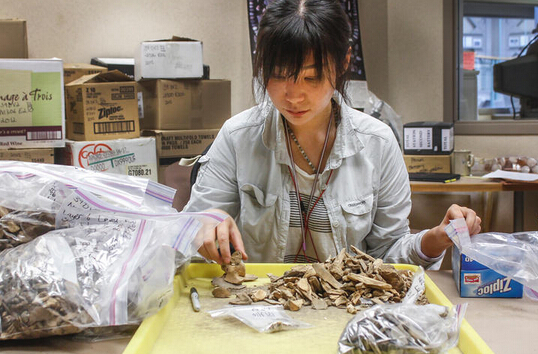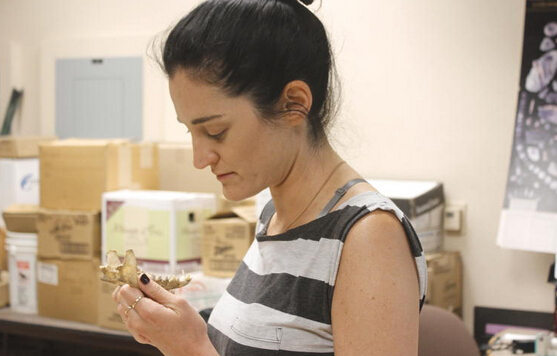Archaeologists from England, Germany identifying canine bones in Mitchell
From:The Mitchell Republic NetWriter:Jake ShamaDate:2016-07-19
There aren't many wolf sightings in central South Dakota, but Mitchell may have once been home to a species of wolf large enough to take down buffalo.Angela Perri, a Las Vegas-born zooarchaeologist working at the Max Planck Institute in Germany, has been at Mitchell's Prehistoric Indian Village since June 20, identifying canine bones that have been dug up in the past several years.
Student archaeologists have unearthed bones from dogs, foxes and wolves of various size, but Perri said some of the bones are much larger than expected, even larger than timber wolves found in nearby Minnesota.
"It wouldn't be surprising there would be a plains wolf ... a more robust wolf for taking down large animals, like bison," Perri said.
On the other end of the spectrum, researchers have identified the bones of a known species called the swift fox, one of the world's smallest foxes that has largely been pushed out of the region.
"We've got the whole span. Everything from little baby swift foxes to big ol' wolves," Perri said.
Xuelei Li, a doctorate student from the University of Exeter in the United Kingdom, arrived on the same day as Perri. As part of her doctoral thesis in environmental archaeology, Li is studying the "loose relationship between human and fox."
After identifying piles of bone fragments unearthed between 2010 and 2015, Li found many belonged to the swift fox.

"It is quite interesting," Li said. "This is quite rare in this area due to the farm land."
Li said the swift fox has recently been reintroduced to the area, but they are still uncommon. In about the year 1000, when Native Americans lived at the village, the swift fox appears to have been more populous than the red or grey fox, which are more common in the Mitchell area today.
Perri and Li were asked to help identify the bone fragments, as bones from all canines, like wolves, foxes, coyotes and dogs, are identical, Perri said.
One distinguishing feature is size, but it is difficult to know if a bone came from a large dog or a small wolf. A mystery yet to be solved by the two canine specialists is the utter lack of coyote remains.
"We haven't found anything that's specifically coyote," Perri said.
One answer goes back to the bone size issue, as some bones that have been identified as medium-sized dogs could actually have come from coyotes.
Perri said the Mitchell site is interesting because it allows researchers to learn about dog species before European breeds were introduced, and the vast amount of canine material shows Native Americans in the village used dogs for a variety of purposes, which may include hauling goods and as food.
"It kind of gives us a more rounded out picture of how humans are interacting with other animals, with their environment, things like that," Perri said. "Mitchell's a great place to do it. It's kind of a unique environment on the Plains. We have a lot of information about dogs from other places like the southwest and the deep south, but in the plains, we don't really know about what's going on with dogs."
According to the Prehistoric Indian Village's archeologist, Adrien Hannus, who also serves as director of Augustana University's Archeology Laboratory, Perri and Li will be going home within a week, but they may request a small grant to return in the future to continue their work.
Before they go, Hannus said the pair will deliver a presentation to University of Exeter students who are taking part in a month-long field school at the Mitchell excavation site this summer.

The village has been the location of a student-sharing agreement between Augustana University and University of Exeter for 13 years. Exeter students are required to complete a month-long field school, and Mitchell is the school's only American site.
Hannus is also proud of the Prehistoric Indian Village's museum, which was renovated during the winter.
"I think the site looks better and is in better shape than it's ever been since I've been involved," Hannus said, who has worked with the facility since 1983.
Hannus invited Mitchell natives and Independence Day travelers to see the updated museum and new native garden during the village's Archeology Awareness Days on Saturday and Sunday.

